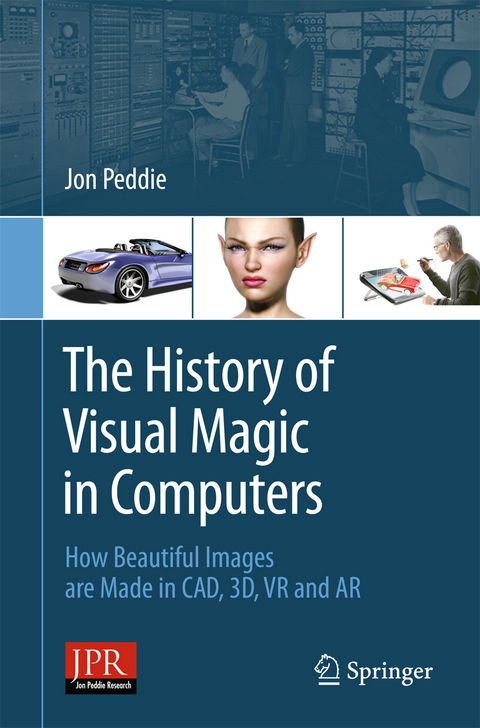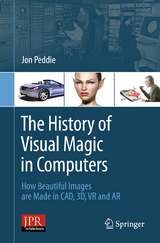The History of Visual Magic in Computers
Springer London Ltd (Verlag)
978-1-4471-4931-6 (ISBN)
If you have ever looked at a fantastic adventure or science fiction movie, or an amazingly complex and rich computer game, or a TV commercial where cars or gas pumps or biscuits behaved liked people and wondered, “How do they do that?”, then you’ve experienced the magic of 3D worlds generated by a computer.
3D in computers began as a way to represent automotive designs and illustrate the construction of molecules. 3D graphics use evolved to visualizations of simulated data and artistic representations of imaginary worlds.
In order to overcome the processing limitations of the computer, graphics had to exploit the characteristics of the eye and brain, and develop visual tricks to simulate realism. The goal is to create graphics images that will overcome the visual cues that cause disbelief and tell the viewer this is not real.
Thousands of people over thousands of years have developed the building blocks and made the discoveries in mathematics and science to make such 3D magic possible, and The History of Visual Magic in Computers is dedicated to all of them and tells a little of their story.
It traces the earliest understanding of 3D and then foundational mathematics to explain and construct 3D; from mechanical computers up to today’s tablets. Several of the amazing computer graphics algorithms and tricks came of periods where eruptions of new ideas and techniques seem to occur all at once. Applications emerged as the fundamentals of how to draw lines and create realistic images were better understood, leading to hardware 3D controllers that drive the display all the way to stereovision and virtual reality.
Dr. Jon Peddie is one of the pioneers of the graphics industry, and formed Jon Peddie Research (JPR) to provide customer intimate consulting and market forecasting services. Peddie lectures at numerous conferences on topics pertaining to graphics technology and the emerging trends in digital media technology. Recently named one of the most influential analysts, he is frequently quoted in trade and business publications, and contributes articles to numerous publications including – as well as appearing on – CNN and TechTV.
Foreword by Rae Earnshaw.- Foreword by Mark Fihn.- Preface.- Introduction: The History of 3D in Computers.- Getting to 3D.- Developing the 3D Software.- Developing the Applications.- Developing the Computer.- Development of 3D Controllers.- Development of Displays: Getting to See 3D.- Stereoscopic 3D in Computers.- The Future.- Index.
| Erscheint lt. Verlag | 24.7.2013 |
|---|---|
| Zusatzinfo | 226 Illustrations, color; 143 Illustrations, black and white; XLI, 448 p. 369 illus., 226 illus. in color. |
| Verlagsort | England |
| Sprache | englisch |
| Maße | 155 x 235 mm |
| Themenwelt | Kunst / Musik / Theater ► Design / Innenarchitektur / Mode |
| Sachbuch/Ratgeber ► Natur / Technik | |
| Informatik ► Grafik / Design ► Digitale Bildverarbeitung | |
| Mathematik / Informatik ► Informatik ► Software Entwicklung | |
| Informatik ► Weitere Themen ► CAD-Programme | |
| Technik | |
| Schlagworte | 3D • 3D Art • 3-Dimensional • 3d software • Advertisement Making • CAD • Computer Aided Design • CRT • Game Making • LED LCD • Mobile Devices • Movie Making • OLED • Raster • Simulation • Stereoscopic 3D • stereovision • Tablet Computers • touch screen • Vector |
| ISBN-10 | 1-4471-4931-9 / 1447149319 |
| ISBN-13 | 978-1-4471-4931-6 / 9781447149316 |
| Zustand | Neuware |
| Informationen gemäß Produktsicherheitsverordnung (GPSR) | |
| Haben Sie eine Frage zum Produkt? |
aus dem Bereich




